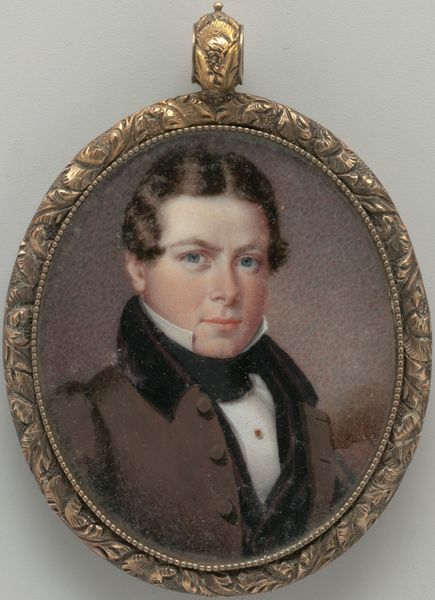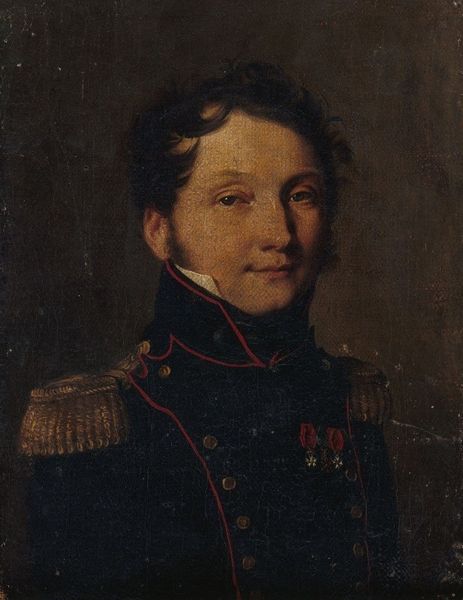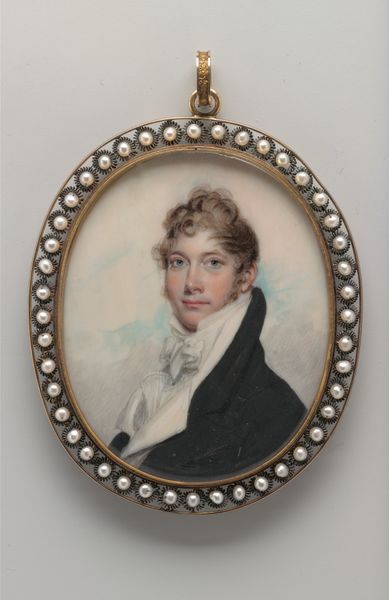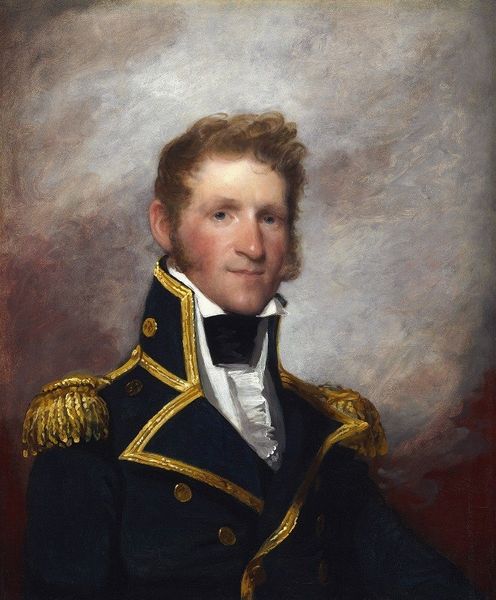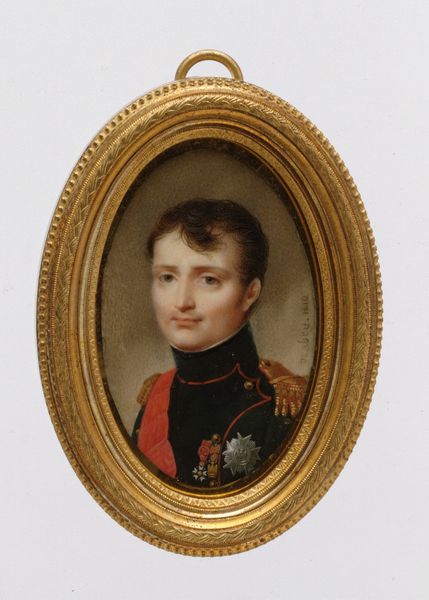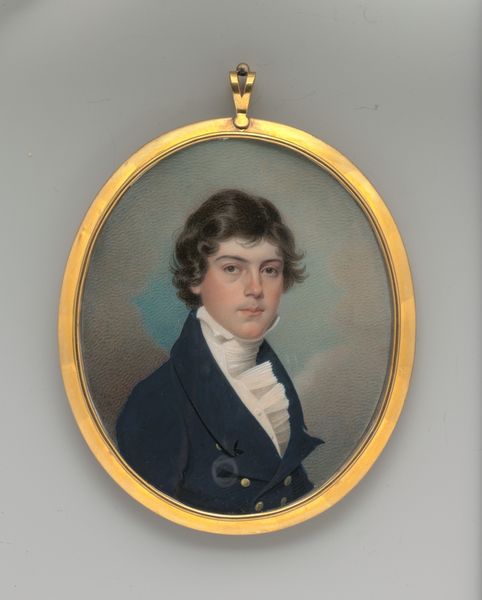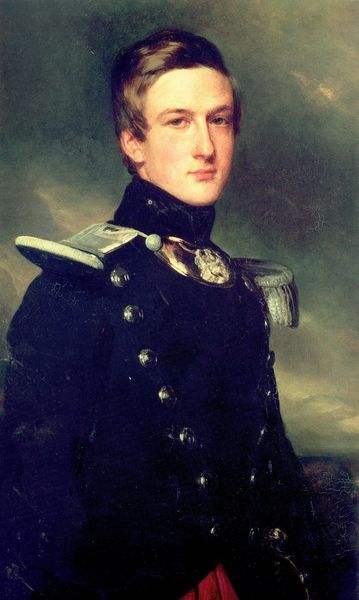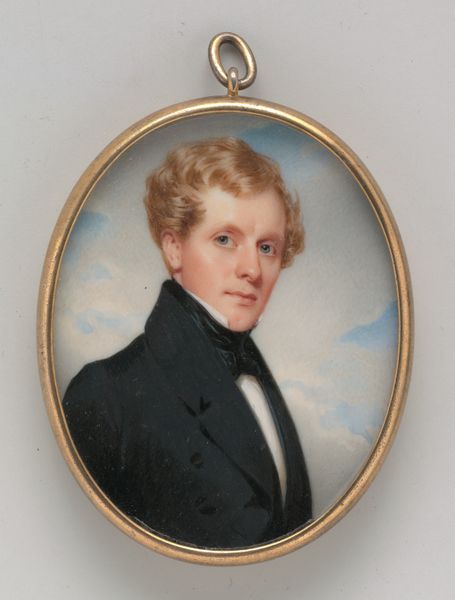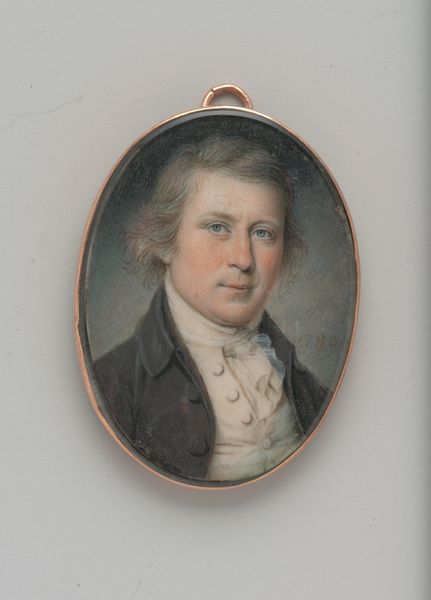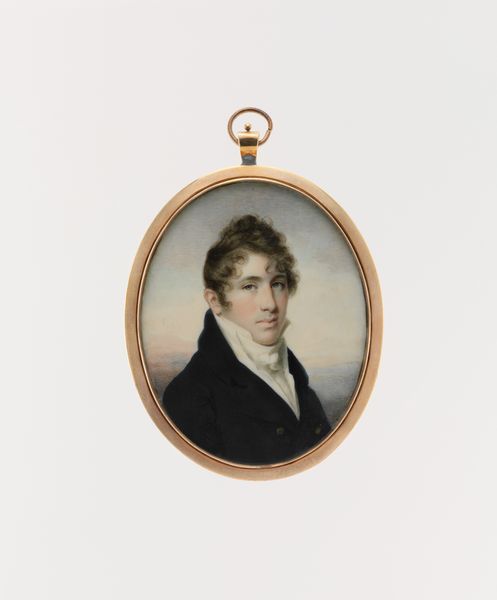
painting, enamel, ivory
#
portrait
#
painting
#
romanticism
#
enamel
#
ivory
#
miniature
Dimensions: 5.8 cm (height) x 4.6 cm (width) (Netto)
Editor: Here we have "Adser Enevold Ludvig Knudsen," a miniature portrait painted by F.C.C. Lund between 1820 and 1824, using enamel on ivory. It’s surprisingly… stoic. The subject’s gaze is so direct. What stories do you think are embedded within an image like this? Curator: Consider the function of a miniature like this. Often worn as jewelry, or kept close, it is not just a likeness, but a potent symbol. A pledge of love? A memento mori? These images, small as they are, speak volumes about intimate relationships, and remembrance. What uniform is he wearing? Editor: It looks like some kind of naval uniform. Curator: Precisely! That adds another layer. It becomes a symbol of national pride, of duty. His steady gaze connects to ideals of service and honor, a carefully constructed visual representation of identity and belonging. Note how the sharp precision contrasts against the more softly rendered face – that’s a very specific visual choice that draws the eye. Editor: So, you’re saying every element, from the uniform to his expression, carries a symbolic weight meant to convey very specific ideas about this person? Curator: Exactly. The symbols accumulate. This portrait isn't simply a snapshot of a man; it is designed to project an identity steeped in cultural meaning that resonates to this day. Even the materials—ivory and enamel—speak to wealth and status. Editor: I never thought about how even the materials used contribute to the overall symbolic representation. Curator: Think of this piece as a window into how people in the Romantic era visualized themselves, and wanted to be remembered. A tiny object, bursting with meaning. Editor: Now, looking at it again, it's incredible how much this small object is trying to say. Thanks for opening my eyes!
Comments
No comments
Be the first to comment and join the conversation on the ultimate creative platform.
